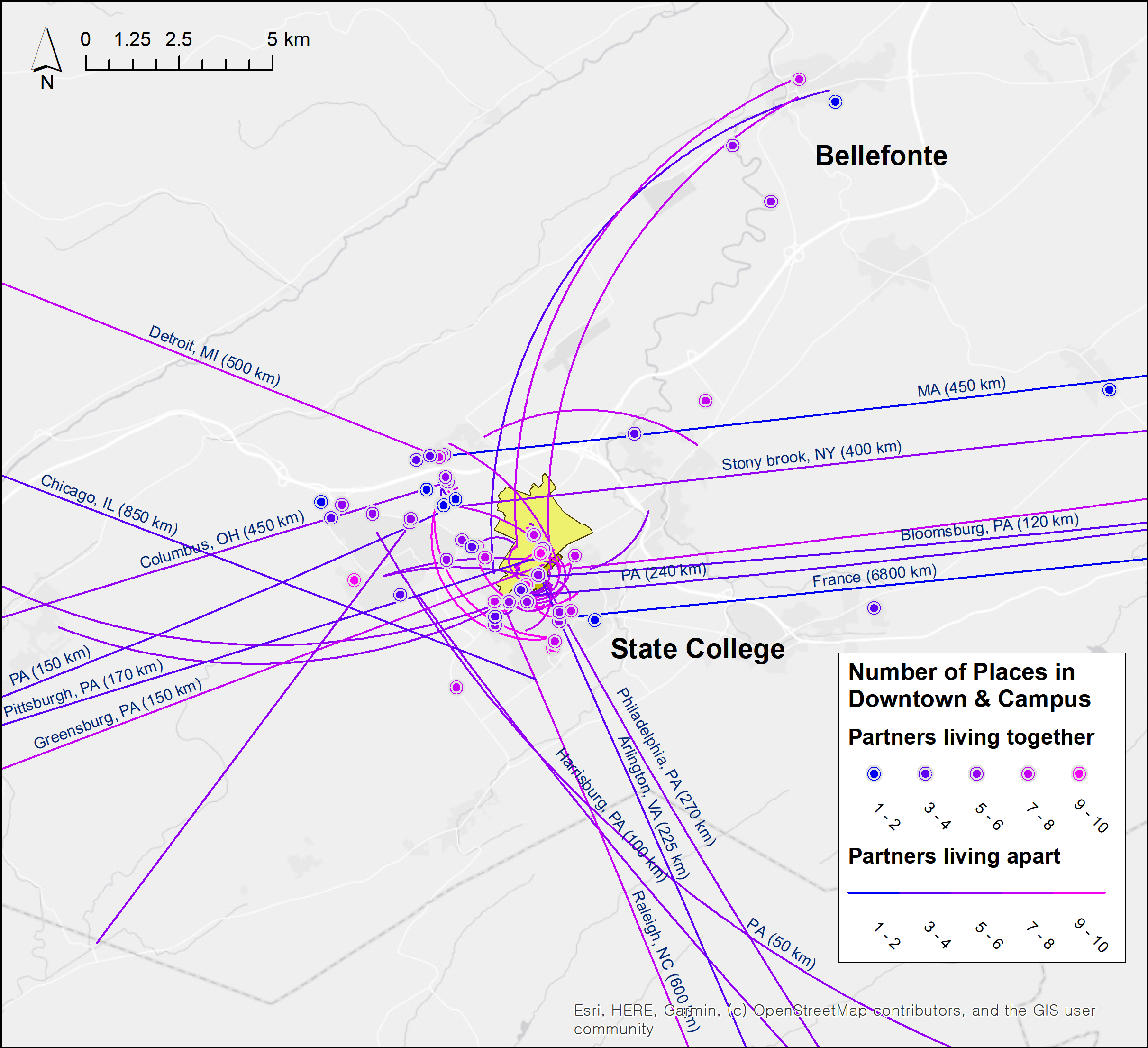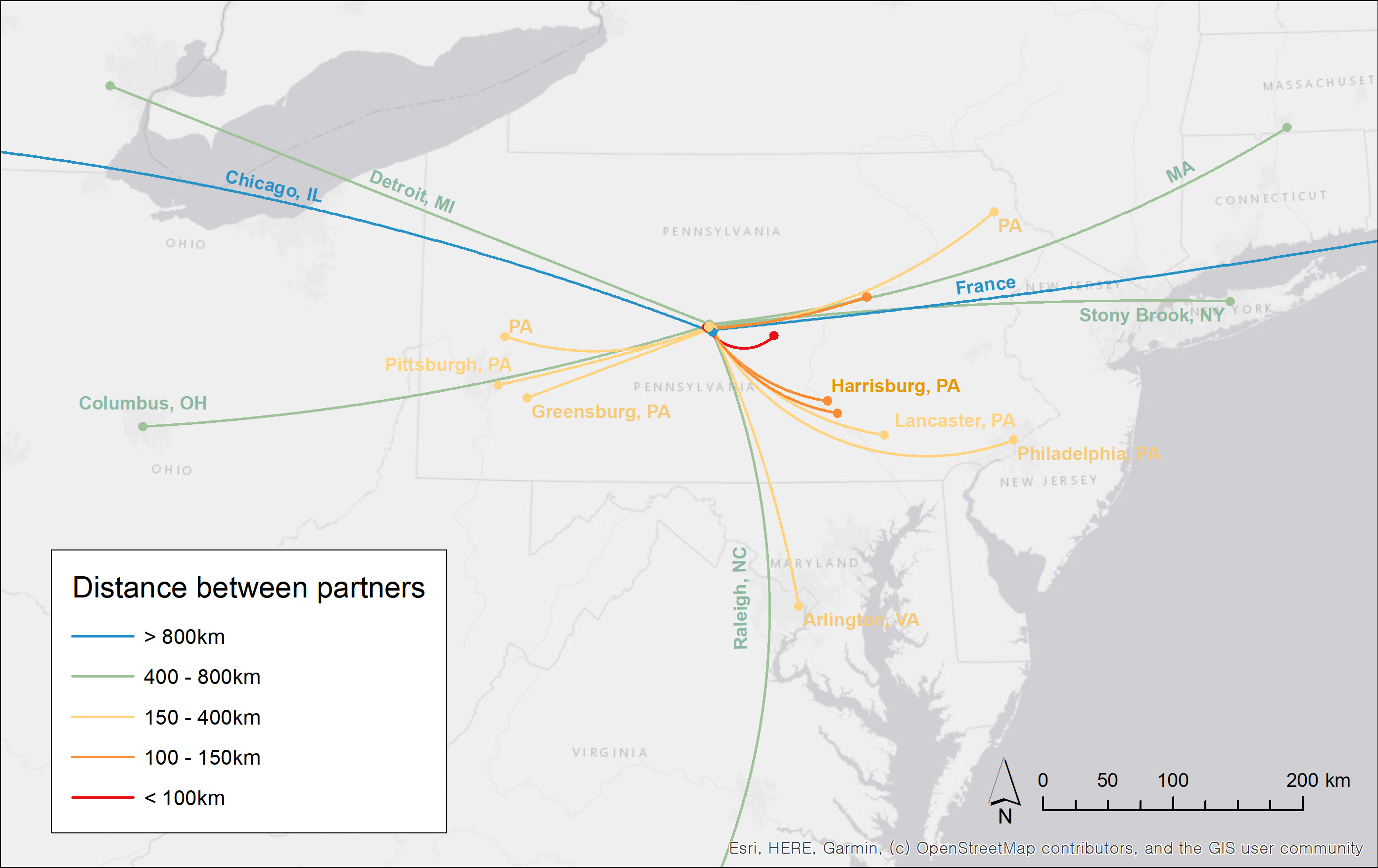We investigated what romantic relationships need from the built environment and how these relate to urbanism principles. Our research questions were threefold: (a) Where do couples spend their quality time and what are the characteristics of these places? (b) Does distance between these places and the couples’ residences affect usage? (c) How does State College, PA support romantic ties and how can it be improved? We conducted an online survey of 124 couples in the State College, PA area, and analyzed these data using frequency statistics, OLS regression, and qualitative coding. We also created maps of the relationships’ approximate locations and measured how their locations affected their activities.
We found that restaurants and the outdoors/recreation were most important for sustaining relationships. Couples frequently emphasized activities involving nature and sports/leisure time and rarely mentioned dinner parties, nightclubs, country clubs, or religious facilities. Couples reported that the town satisfied their relationship needs, especially in terms of safety (i.e. well-lit areas and pedestrian-friendly environments). We think this research can be useful during the COVID-19 pandemic, as cities try to support social ties amidst the closure of third places and social activities. Post COVID-19, it may also help inform which facilities to prioritize in terms of opening decisions post-pandemic.
Andris C and Lee S (2021) Romantic Relationships and the Built Environment: A Case Study of a US College Town. Journal of Urbanism: International Research on Placemaking and Urban Sustainability, 1-22. (Online first). [PDF] and [Supplementary Information]



